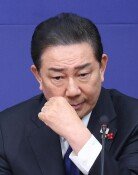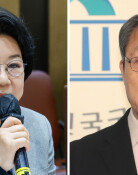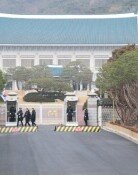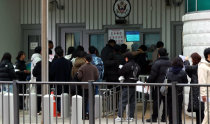1960 Democracy Movement Lives On in Photo Collection
1960 Democracy Movement Lives On in Photo Collection
Posted February. 16, 2010 09:01,
The late Choi Gyeong-deok was chief photographer of The Dong-A Ilbo in June 1960, when he was aboard Air Force One with then U.S. President-elect Dwight D. Eisenhower.
Choi said, Eisenhower thoughtfully nodded and said he could picture what it was like back then. He said he looked closely at the photos of the body of pro-democracy martyr Kim Ju-yeol and Korea University students being beaten by gangsters.
Eisenhower had first visited Korea in December 1952 as a general serving in the Korean War. He had vivid memories of the devastating war, but must have been surprised over the sacrifices made by the Korean people in 1960 to achieve democracy regardless of age and gender and despite their tragic history of division and war.
After visiting Korea in 1960, Eisenhower said, The (1960) movement preserved freedom with blood and courage.
The photo collection Memoirs of Democratic Revolution chronicling Koreas 1960 pro-democracy movement begins with the phrase, This photo collection is dedicated to the soul of a young activist who sacrificed himself for the revolution.
The collections forward said, Beginning with the students demonstration in Daegu Feb. 28 and ending with the celebratory moment April 26, Dong-A Ilbo photographers captured the countrys democratic history written in blood while lending a hand to young activists, as well as the diverse facets of the democratic movement.
The collections 283 black and white photos were mostly taken by the newspapers photographers, capturing historic moments of the 1960 pro-democracy movement from the Daegu students Feb. 28 to the fall of the Rhee Syngman administration April 26.
The photos include scenes of students who took to the streets crying anti-dictatorship slogans, the body of Kim Ju-yeol covered with the national flag, Rhees statue being pulled down, and the house of his vice president Yi Ki-bung under attack.
The collection proved so popular, 20,000 initial copies released June 1, 1960, sold out in just 10 days. An additional 10,000 copies printed the next month were also sold out.
A photo of citizens cheering wildly on top of military tanks over Rhees announcement of his resignation while the country was under martial law was printed on the cover.
Photographer Park Yong-yun, who took the picture, said, The hands of citizens who were clapping seemed like they were clasped as if praying.
The photo symbolized the victory of the movement, and has been carried by other media and books without proper credit.
Dong-A photographers traveled nationwide from Seoul to Busan and captured key moments of the pro-democracy movement, often risking their lives.
Photographer Lee Myeong-dong, 90, captured with his camera students bleeding to death from gunshots in front of the presidential office on the afternoon of April 19, 1960. Ill never forget the students who cried for democracy and freedom until their last moment while holding the national flag soaked in blood, he said.
jjj@donga.com




![[사설]“용인에 産團 있어야 할지”… 국가대계 흔드는 경망한 김성환](https://dimg.donga.com/c/138/175/90/1/wps/NEWS/IMAGE/2025/12/28/133051638.1.jpg)


